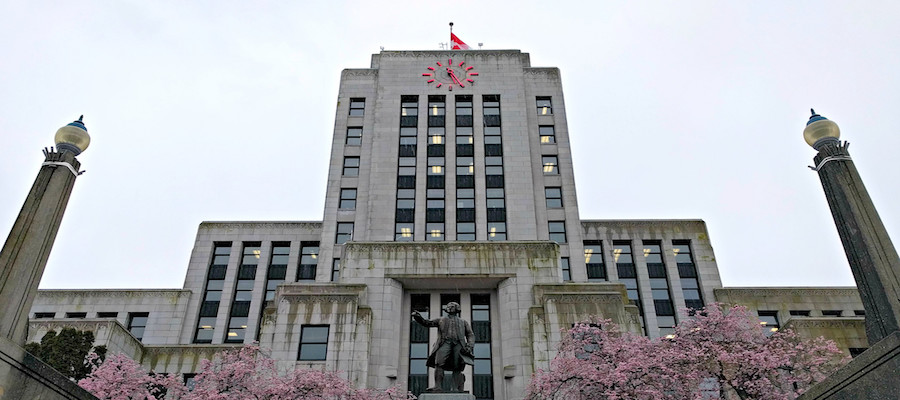Time to extend financial supports to local governments

Local governments and regional authorities like TransLink have been missing from federal and provincial economic responses to COVID-19. Local governments are facing collapsing revenues, and unlike federal and provincial governments, they are not allowed to run deficits to cover their operating costs. As a result they are already staring into the abyss of painful austerity that would cut additional public services and lay off more workers. This is unnecessary and needs to be fixed quickly.
The economic response to COVID-19 to date has been led by the federal government, with the primary objective of getting money into the hands of employers (through the Canada Emergency Wage Subsidy program, which pays businesses and non-profits to keep workers on payroll but is not currently applicable to workers in the public sector) and the Canada Emergency Response Benefit (which pays $2,000 per month to those who have lost work due to the pandemic). Provincial governments have largely—and rightly—been preoccupied with the public health response to the crisis, with some additional economic and income support being provided (and varying widely by province).
In the face of COVID-19, local governments have already had to close community centres and libraries for public safety reasons. Other vital civic services must continue—including policing, fire fighting, water and sewer networks, waste collection, and others. If anything these public services are more vital than ever.
Local governments are facing collapsing revenues, and unlike federal and provincial governments, they are not allowed to run deficits to cover their operating costs.
Last week the City of Vancouver asked the BC government for a $200 million grant so it can continue providing essential public services. The city projects a $189 million deficit if the crisis persists to the end of the year, although only $111 million if we can return to normal by the end of August. It estimates a $61 million shortfall for a May return to normal, but that seems highly unlikely given current COVID-19 case numbers.
Without help from provincial or federal governments, local governments like Vancouver’s are in a bind. In addition to not being allowed to run deficits, they have long had fewer options for raising revenues. Whereas federal and provincial governments have access to income and sales taxes, local governments rely mostly on property taxes. While there is a case to be made for higher property taxes overall to raise revenue and create a more progressive tax system, this is not a change we should make in the current moment. If anything, additional deferrals of local and provincial property tax should be on the table to ease the cash flow situation of struggling businesses and households.
Translink is in a similar bind. The public transit authority’s three major sources of revenue—transit fares, fuel taxes and property taxes—are in substantial decline and the agency has stated it anticipates losing $75 million a month over the next six months. While service levels for bus and Skytrain have already been reduced by 15-20%, and Seabus by 50%, system ridership is down 80%. To protect bus drivers, fares are not being collected, while additional cleaning measures are increasing operating costs.
Without help from provincial or federal governments, local governments like Vancouver’s are in a bind.
Without a cash infusion soon TransLink will need to make drastic cuts that would undermine mobility for essential workers and others who need to take transit—some 75,000 people. And in the longer run it would undermine the region’s (and BC’s) economic recovery and quality of life.
What is needed to support local and regional governments?
First, the federal government should expand the CEWS program to cover local and regional government workers. The federal wage subsidy program applies to businesses of all sizes, NGOs and charities, so it’s not a huge stretch to extend it to TransLink or municipal governments who are also seeing precipitous drops in revenue due to this crisis. In a sense, think of local governments as large corporations that need support for all the same reasons as private businesses.
Interestingly, BC Ferries argues it could be eligible for the federal wage subsidy program because of a technicality: since 2003 it is no longer a Crown corporation but an “independent, commercial corporation” owned by the BC government. TransLink is not all that different, and has experienced a more than 30% drop in revenues, so there’s no reason to exclude it from the CEWS.
In a sense, think of local governments as large corporations that need support for all the same reasons as private businesses.
Second, provincial governments should provide grants to local governments (since they are “creatures of the province”) to cover any remaining short-term deficits. The CEWS alone may not be enough to keep vital services operating. The Bank of Canada is already supporting public sector expenditures by purchasing up to $5 billion a week of Government of Canada bonds and has already committed to buying 40% of new issues of provincial government bonds. Additional quantitative easing to support local government operations is appropriate, whether that flows through the federal or provincial governments.
COVID-19 has highlighted just how important the public sector is to the health and well-being of Canadians. As we seek to bridge businesses and households to the other side, we need to support local governments to ensure high quality public services and to avoid further layoffs.
Topics: COVID-19, Economy, Privatization, P3s & public services, Provincial budget & finance

